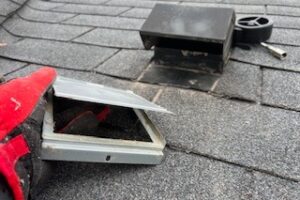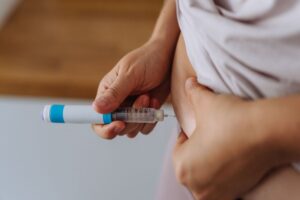Culver City is a dynamic hub, home to thriving businesses, innovative tech companies, and a vibrant entertainment industry. In this bustling environment, commercial property owners and managers are constantly focused on maintaining safe, productive spaces for their employees and clients. However, an invisible, odorless, and tasteless threat—radon gas—can silently accumulate inside buildings, posing a serious health risk. Proactive Commercial Radon Testing in Culver City, California, is an essential step to ensure the long-term safety and integrity of any commercial property.
Understanding Radon: An Unseen Danger for Workplaces
Radon is a naturally occurring radioactive gas formed from the breakdown of uranium in soil and rock. While harmless when diffused in the outdoor air, it can seep into enclosed spaces like commercial buildings and concentrate to dangerous levels. For businesses, this is particularly concerning because employees, tenants, and customers often spend significant hours inside. Prolonged exposure to elevated radon levels is the second leading cause of lung cancer after smoking, making it a critical indoor air quality issue for any workplace. Even though Los Angeles County, including Culver City, is generally considered a moderate radon risk area (EPA Zone 2), testing remains the only way to truly know the levels within a specific commercial building.
How Radon Finds Its Way into Commercial Properties
Commercial buildings, with their diverse structures and extensive footprints, offer various pathways for radon entry. Unlike smaller residential homes, large commercial properties often feature expansive concrete slabs, which can develop cracks or have construction joints that act as entry points. Radon can also enter through utility penetrations (where pipes or wires come through the foundation), floor drains, sump pits, or even through porous concrete blocks in foundation walls.
Modern commercial buildings, often designed to be very airtight for energy efficiency, can inadvertently trap radon inside. With less natural ventilation, any radon that enters the building has fewer opportunities to escape, allowing it to build up to hazardous concentrations. Given the variety of commercial spaces in Culver City—from sprawling office complexes and industrial warehouses to retail outlets and entertainment studios—understanding these unique entry points is crucial for effective Commercial Radon Testing in Culver City, California.
The Business Case for Commercial Radon Testing
Beyond the ethical responsibility to provide a safe environment, there are compelling practical and legal reasons for commercial property owners to conduct radon testing:
- Employee and Customer Health: The primary concern. Protecting the health of those who work in or visit your building is paramount. Long-term exposure to radon can lead to serious health issues, potentially impacting employee well-being and productivity.
- Legal and Ethical Compliance: While specific commercial radon regulations vary by state, property owners have a general duty of care. Proactive testing demonstrates a commitment to health and safety, mitigating potential liability issues and strengthening a business’s reputation.
- Property Value and Transactions: Radon levels can significantly impact the value and marketability of commercial real estate. During buying, selling, or leasing a commercial property, radon testing is increasingly becoming part of the due diligence process. Undetected high levels can cause delays or even collapse transactions. Ensuring your property is tested and, if necessary, mitigated, helps maintain its value and appeal. This makes Commercial Radon Testing in Culver City, California, a smart business investment.
- Risk Management: Identifying and addressing radon risks early is a key component of comprehensive risk management for any commercial enterprise, preventing unforeseen health crises or operational disruptions.
The Professional Commercial Radon Testing Process
Conducting Commercial Radon Testing in Culver City, California, requires specialized expertise. The process is designed to be efficient and minimally disruptive to business operations:
- Site Assessment: A certified professional first evaluates the commercial property, considering its size, layout, foundation type, HVAC systems, and typical occupancy patterns.
- Strategic Detector Placement: Specialized radon detectors (either short-term, lasting a few days, or long-term, for 90+ days) are strategically placed throughout the lowest occupied levels and other relevant areas of the building to capture representative readings.
- Controlled Conditions: For accurate short-term tests, “closed-building conditions” are maintained, meaning windows and external doors are kept closed as much as possible, and HVAC systems operate normally.
- Laboratory Analysis: After the testing period, the detectors are sent to an accredited independent laboratory for precise analysis.
- Comprehensive Report and Recommendations: The business owner receives a clear, detailed report outlining radon levels. If elevated levels are detected (typically above 4 picocuries per liter, or pCi/L, as per EPA guidelines), the report will include expert recommendations for mitigation strategies to reduce radon effectively, such as sealing entry points or installing soil depressurization systems.
Choosing Your Radon Testing Partner in Culver City
When seeking Commercial Radon Testing in Culver City, California, it’s crucial to choose certified and experienced professionals. Look for experts who understand the unique complexities of commercial structures, from large office buildings and retail spaces to industrial facilities. A reliable testing partner provides unbiased results and clear, actionable advice, helping you navigate any necessary steps to ensure a safe and healthy environment for everyone who enters your commercial property. Prioritizing expert Commercial Radon Testing in Culver City, California, is a testament to a business’s commitment to safety and a wise decision for the long-term well-being of its occupants and its investment.


